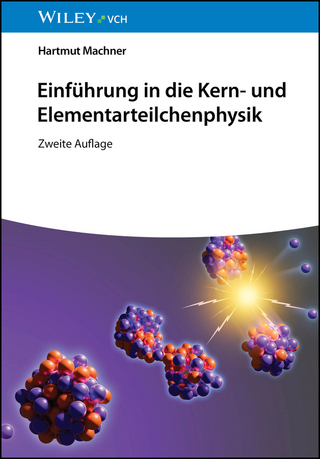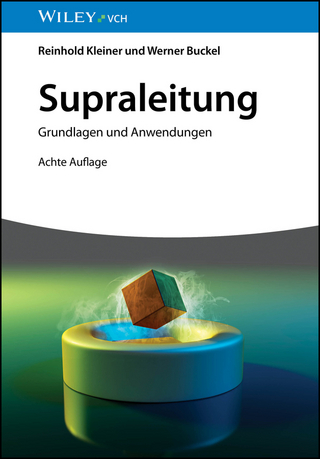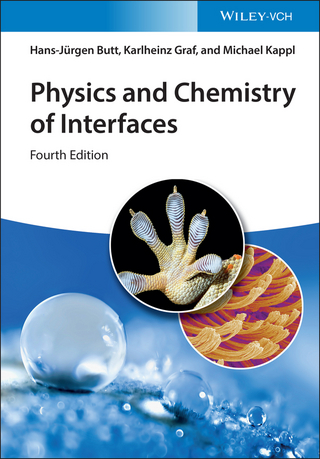
New Aspects of High-Energy Proton-Proton Collisions
Springer-Verlag New York Inc.
978-1-4615-9542-7 (ISBN)
The present workshop was supported by the Italian Ministry of Education, the Italian Ministry of Scientific and Technological Research, the Sicilian Regional Government and the Ettore Majorana Centre for Scientific Culture. With the successful operation of the CERN Superconducting antiproton-proton Synchrotron (SppS), resulting in the discoveries of the vector bosons W and Z and providing evidence for new aspects of flavour mixings, the interest in very high energy proton beams as probes of fundamental phenomena in nature has mounted worldwide.
1. The ELOISATRON Project: Eurasiatic Long Intersecting Storage Accelerator.- 1 Introduction.- 2 The Need for ELOISATRON.- 3 From Theory to Down-to-Earth Physics.- 4 The ELOISATRON Laboratory.- 5 Conceptual Design of the Full Scale ELOISATRON Project.- 6 Where the ELOISATRON Project has been Presented.- 7 Conclusions.- 2. Criteria for Steps to Higher Energies.- 1 Introduction.- 2 Physics Motivation.- 3 Machine Technology.- 4 Detector Technology.- 5 Financial Boundaries.- 6 Ecological, Sociological and Political Aspects.- 7 Concluding Remarks.- 3. The LEP Project at CERN.- 1 Introduction.- 2 The Status of LEP.- 3 The Detectors for LEP.- 4 Physics Goals.- 5 Evolution of the LEP Program.- 4. Physics at Future Colliders.- 5. Higgs Production in High Energy Hadron Collisions.- 1 Introduction.- 2 Scattering of Longitudinal Gauge Bosons.- 3 Higgs Search at LHC and SSC.- 4 Higgs Search at ELOISATRON.- 6. Supersymmetric Particle Searches at Future HadronColliders.- 1 Introduction.- 2 Supersymmetric Particles Signatures.- 3 Squarks and Gluinos.- 4 Electroweak Sparticles.- 5 Summary and Conclusions.- 7. Signatures of Compositeness in Very High Energy pp Collisions.- 1 Introduction.- 2 Contact Interactions.- 3 pp Collisions as a Source of Colored Composites.- 4 WLWL ? WLWL Scattering as Probe of the Higgs Sector.- 5 Conclusions.- 8. Leptoquarks at 100 TeV: Proton-Antiproton Collider.- 1 Introduction.- 2 Detection of Leptoquarks.- 3 QCD-Background.- 9. Physics of Superheavy Onia.- 1 Introduction.- 2 Heteroquark vs Homoquark.- 3 Upper Limits on the Quark Mass.- 4 Spectrum of Onia.- 5 Novel Features of Superheavy Onia.- 6 Annihilation Strength.- 7 Onia Production in Hadron Collisions.- 8 Decays of Superheavy Onia.- 9 Detection of Onia at Supercolliders.- 10 More Exotic States.- 11Onia Production at Higher Energies.- 12 Conclusions.- 10. New trigger System for High Luminosity Collisions.- 1 Introduction.- 2 Luminosity and Trigger Rates.- 3 Trigger Schemes.- 4 Conclusions.- 11. Particle Detectors Based on the New MultichannelPhotomultipliers.- 1 Basic Characteristics.- 2 Implementation of These Characteristics in a Detector.- 3 Special Characteristics of the Detector.- 12. Beauty Physics at the Ultrahigh Energies of the ELOISATRON.- 1 Introduction.- 2 Cross Sections.- 3 Production Angular Distributions of the Beauty Quarks.- 4 Momentum of the b Quarks and B Hadrons.- 5 Conclusion.- 13. Large Transverse Momentum Leptons in (Very) HighProton-(Anti)Proton Collisions.- 1 Introduction.- 2 Open Heavy Flavour Production.- 3 Comparison with UA1 Collider Data and Extrapolations to Higher Energies.- 4 Heavy Flavour Bound State Sources in Hadron-Hadron Interactions ..- 5 Comparison with Data and Extrapolations to Higher Beam Energies..- 14. Prompt Photons in Very High Energy Collisions.- 1 Introduction.- 2 QCD Predictions for Prompt Photon Cross Sections.- 3 Predictions for Collisions at TeV Energies.- 4 Production of Two Large-pT Photons.- 5 Background to New Physics.- 6 Conclusion.- 15. Drell-Yan Processes in High Energy Hadron Collisions.- 1 Introduction.- 2 Cross Sections and Luminosity Functions.- 3 W, Z Production at High Energies.- 4 New Gauge Boson Production.- 5 Conclusions.- 16. Proton-Proton and Antiproton-Proton Scattering at theHighest Energies.- 1 Introduction.- 2 The Glauber Model.- 3 The Cheng-Wu Impact Space Parametrisation.- 4 Crossing and High-Energy Behaviour of Amplitudes.- 5 Theorems of Asymptotic Behaviour.- 6 The Odderon Ansatz of Gauron, Nicolescu and Leader (GNL).- 7 Three-Gluon Exchange: The Model of Donnachie and Landshoff.- 8 Conclusion.- 17. Role of Multiple Parton Processes at Colliders.- 1 Introduction.- 2 Multiparton Scattering.- 3 Signatures of DDS.- 4 Shadowing of the Hard Total Cross Section.- 5 Concluding Remarks.- 18. Jet Physics-Theoretical Issues in Simulating Very HighEnergy Collisions.- 1 Introduction.- 2 Spin Correlations in Jets.- 3 Soft Gluon Coherence.- 4 Conclusions.- 19. Soft Processes in Very High Energy Proton-ProtonCollisions.- 1 Introduction.- 2 Hard and Soft Components in High-PT Jets.- 3 Minimum Bias Physics and Beam Jets.- 4 Pomeron Structure and Diffractive Scatterring.- 5 Conclusions.- 20. The Pattern of Lepton and Quark Masses.- 1 The Pattern of Lepton and Quark Masses.- 2 A Unique Parametrization of the Weak Mixing.- 3 Three Generations.- 4 Flavour Mixing for N-Generations.- 5 Conclusions.- 21. Non-Accelerator Physics at ?s ? 40 Te.- 1 Introduction.- 2 Proton Cross Section in Air.- 3 Realtion to ?pp.- 4 Extrapolation of Hadronic Interactions.- 5 Astrophysical Applications.- 22. Cosmic Accelerators: a New Era of Cosmic RayAstrophysics and Particle Physics.- 1 Cosmic Particles and their Detection.- 2 Cosmic Accelerators.- 3 Particle Physics with Cosmic Accelerators.- 4 Next-Generation Cosmic Ray Telescopes.- 5 Discussion.- Participants.
| Erscheint lt. Verlag | 12.12.2012 |
|---|---|
| Reihe/Serie | Ettore Majorana International Science Series ; 39 |
| Zusatzinfo | 79 Illustrations, black and white; XII, 434 p. 79 illus. |
| Verlagsort | New York, NY |
| Sprache | englisch |
| Themenwelt | Naturwissenschaften ► Physik / Astronomie ► Atom- / Kern- / Molekularphysik |
| Naturwissenschaften ► Physik / Astronomie ► Hochenergiephysik / Teilchenphysik | |
| ISBN-10 | 1-4615-9542-8 / 1461595428 |
| ISBN-13 | 978-1-4615-9542-7 / 9781461595427 |
| Zustand | Neuware |
| Informationen gemäß Produktsicherheitsverordnung (GPSR) | |
| Haben Sie eine Frage zum Produkt? |
aus dem Bereich


